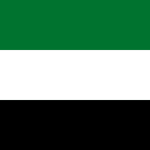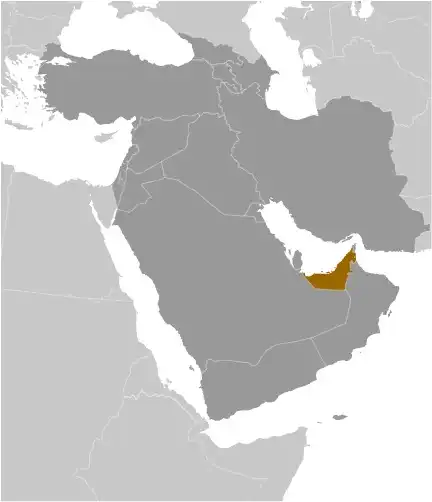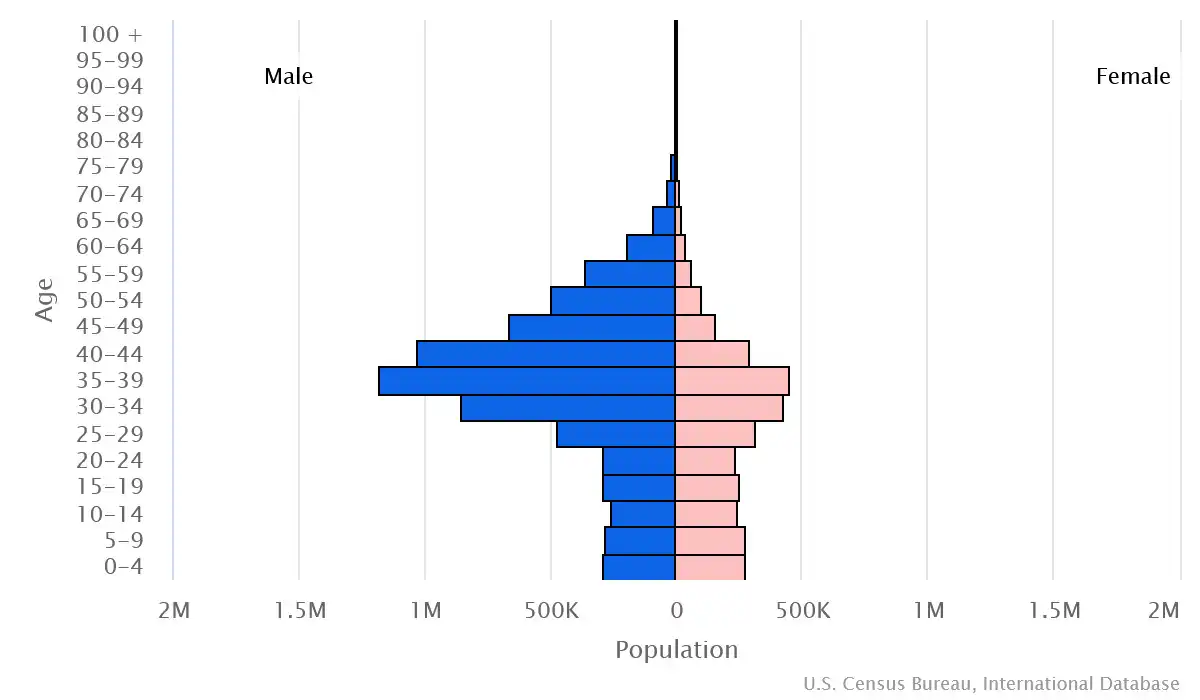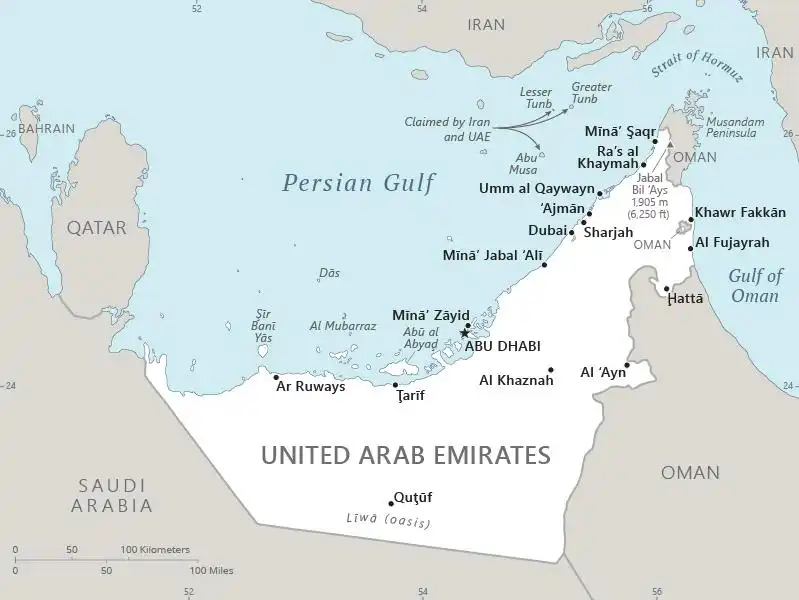
United Arab Emirates
Veröffentlicht: 20. June 2022 - Letztes Update: 28. February 2025
Country Data Dashboard

Population
10,032,213
Growth: 0.6% (2024 est.)
GDP
$514.13 billion
(2023 est.)
Area
83,600 sq km
| Government type: | federation of monarchies |
| Capital: | Abu Dhabi |
| Languages: | Arabic (official), English, Hindi, Malayalam, Urdu, Pashto, Tagalog, Persian |
People & Society
Ethnicity (2015 est.)
Religion (2020 est.)
Age structure

Economy
Economic overview
historically oil-driven Middle Eastern economy; diversifying into a trade-oriented logistics and supply chain leader; strong foreign direct investment orientation; building trade and investment ties through partnership agreements; growing banking sector; recent economic linkages with Israel slowing due to Gaza conflict
Real GDP (purchasing power parity) in Billion $
Real GDP per capita in $
Exports & Imports in billion $
Top 5 Import Partner in 2022 (41%)
Top 5 Import Commodities in 2022
- gold 💰
- broadcasting equipment 📡
- refined petroleum ⛽
- diamonds 💎
- cars 🚗
Top 5 Export Partner in 2022 (41%)
Top 5 Export Commodities in 2022
- crude petroleum 🛢️
- refined petroleum ⛽
- gold 💰
- broadcasting equipment 📡
- natural gas 💨
Geography
Map

Area
Natural resources
- petroleum 🛢️
- natural gas 💨
Climate
desert; cooler in eastern mountains
Historical Background Information
The Trucial States of the Persian Gulf coast granted the UK control of their defense and foreign affairs in 19th-century treaties. In 1971, six of these states -- Abu Dhabi, 'Ajman, Al Fujayrah, Ash Shariqah, Dubayy, and Umm al Qaywayn -- merged to form the United Arab Emirates (UAE). Ra's al Khaymah joined in 1972.
The UAE's per-capita GDP is on par with those of leading West European nations. For more than three decades, oil and global finance drove the UAE's economy. In 2008-09, the confluence of falling oil prices, collapsing real estate prices, and the international banking crisis hit the UAE especially hard. The UAE did not experience the "Arab Spring" unrest seen elsewhere in the Middle East in 2010-11, partly because of the government's multi-year, $1.6-billion infrastructure investment plan for the poorer northern emirates, and its aggressive pursuit of advocates for political reform.
The UAE in recent years has played a growing role in regional affairs. In addition to donating billions of dollars in economic aid to help stabilize Egypt, the UAE was one of the first countries to join the Defeat ISIS coalition, and to participate as a key partner in a Saudi-led military campaign in Yemen. In 2020, the UAE and Bahrain signed a peace agreement (the Abraham Accords) with Israel -- brokered by the US -- in Washington, D.C. The UAE and Bahrain thus became the third and fourth Middle Eastern countries, along with Egypt and Jordan, to recognize Israel.
The UAE's per-capita GDP is on par with those of leading West European nations. For more than three decades, oil and global finance drove the UAE's economy. In 2008-09, the confluence of falling oil prices, collapsing real estate prices, and the international banking crisis hit the UAE especially hard. The UAE did not experience the "Arab Spring" unrest seen elsewhere in the Middle East in 2010-11, partly because of the government's multi-year, $1.6-billion infrastructure investment plan for the poorer northern emirates, and its aggressive pursuit of advocates for political reform.
The UAE in recent years has played a growing role in regional affairs. In addition to donating billions of dollars in economic aid to help stabilize Egypt, the UAE was one of the first countries to join the Defeat ISIS coalition, and to participate as a key partner in a Saudi-led military campaign in Yemen. In 2020, the UAE and Bahrain signed a peace agreement (the Abraham Accords) with Israel -- brokered by the US -- in Washington, D.C. The UAE and Bahrain thus became the third and fourth Middle Eastern countries, along with Egypt and Jordan, to recognize Israel.
